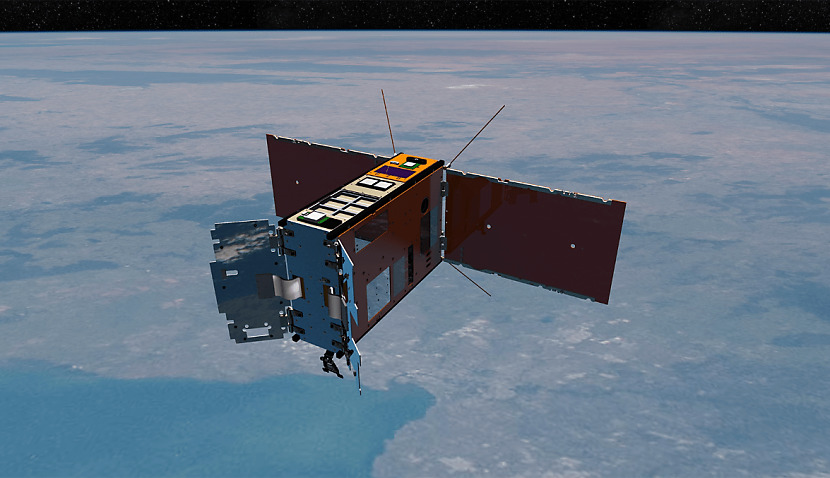
Talking to the Space Connect Podcast, principal investigator Michele Trenti revealed his team were initially concerned they couldn’t detect the spacecraft before finally locating its beacon after 45 minutes.
The nanosatellite, designed to search for gamma rays, was successfully launched aboard a SpaceX Falcon 9 rocket in December.
The blast-off was considered a milestone moment for the Australian space sector because the mission is a collaboration between industry and academia and supported by almost $7 million in grants from the Australian Space Agency.
Professor Trenti was a guest on the show recorded last month and is set to be released next week.
Asked about his feelings during the blast-off, Trenti called it an “incredible moment”.
“It’s difficult to describe because you have so many emotions, all clashing with each other,” he said. “You have excitement, you have fear, you have a bit of anxiety, worry and then joy. It was a hot pot of emotions. I think a very emotional moment was the countdown to the rocket lift-off.
“We were looking at it on a big screen with the team, which was broadcasting in real-time by SpaceX. And that was a good moment. But on the other hand, we had quite a bit of confidence that the rocket would do its job.
“I think the most emotional moment was when the satellite, about 45 minutes after deployment from the rocket, started beaconing. SpIRIT, every 60 seconds, emits an unencrypted UHF electronic heartbeat, a beacon that gives some basic health status information on the spacecraft.
“And that can be picked up by the AMSAT community. There are radio enthusiasts listening for these satellite beacons and then reporting them on the SatNogs community website. So we were really anxiously monitoring SatNogs to see who was reporting SpIRIT beacons.
“Finally, we get to see after a few failed observations that were reporting no contact, that got us a little bit worried.
“We saw an observation with two faint lines at the right frequency for communication from SpIRIT at the right temporal separation, separated by 60 seconds. And we debated quite a bit internally in the team, ‘Is this the SpIRIT beacon or not?’
“And then we convinced ourselves, yes, it is. So we were very happy. And I think about half an hour later, then one other observation comes in that the beacon has been not just observed, but also partially decoded.”
The project – known in full as the Space Industry Responsive Intelligent Thermal nanosatellite – is a unique collaboration between Australia and the Italian Space Agency, which has created the scientific instruments on board.
Four years in the making, its solar panels will power a “selfie stick” camera, guidance systems, and a pioneering electric propulsion system created by Neumann Space.
It’s designed to fly in low-Earth orbit for two years in a polar (or sun-synchronous) orbit, travelling “vertically” from north to south, but positioned so it always faces the sun at a similar angle.
Researchers are now testing and commissioning the spacecraft before it will be transitioned to a fully operational phase.
Once set up, the 11.5-kilogram device will deploy solar panels and thermal radiators to search for the elusive phenomenon created when stars die or collide.

Adam Thorn
Adam is a journalist who has worked for more than 40 prestigious media brands in the UK and Australia. Since 2005, his varied career has included stints as a reporter, copy editor, feature writer and editor for publications as diverse as Fleet Street newspaper The Sunday Times, fashion bible Jones, media and marketing website Mumbrella as well as lifestyle magazines such as GQ, Woman’s Weekly, Men’s Health and Loaded. He joined Momentum Media in early 2020 and currently writes for Australian Aviation and World of Aviation.
Receive the latest developments and updates on Australia’s space industry direct to your inbox. Subscribe today to Space Connect here.









